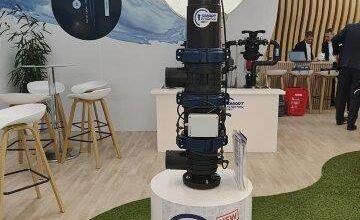How to Prevent Clogging of Emitters in Drip Irrigation
Analysis of the biological, chemical, and particles content of water plays a major role.


micro irrigation systems have many advantages over other types of irrigation.
· deliver of water and nutrients to the root zone is more uniform.
· runoff is prevented.
· weed population is better controlled.
· the less humid environment helps control pests and diseases.
sub surface irrigation presents some additional advantages -drip emitters are protected, and runoff and evaporation are minimized, increasing irrigation efficiency even more.
nevertheless, micro-irrigation systems should be properly planned and managed, in order to fully benefit from these advantages. one of the main challenges is keeping the drip emitters free of clogging.
causes of dripper plugging are categorized into biological, physical and chemical.
it is useful to differentiate between surface water and ground water because different water sources carry different plugging hazards.
physical causes of emitter clogging in drip irrigation
the most common physical causes of clogging of drip emitters are sand particles, which are usually found in surface water. other suspended solids may be too large to pass through the emitter’s opening and might clog it.
under certain conditions, silt-sized particles can form larger aggregates, that may cause clogging. turbidity is often used as an estimate of the suspended solids, but is not an accurate indicator of the water’s clogging potential.
an adequate filtration system, designed based on the quality of the water, can prevent physical plugging of drip systems.
biological causes of emitter clogging in drip irrigation
drip irrigation systems provide a favorable environment for bacteria, fungi and algae that can cause slime accumulation. bacterial slime can be a direct cause for clogging of drippers, but it can also induce mineral particles to stick together and form aggregates large enough to clog the emitter openings. this phenomenon is specifically significant when manganese, sulfide and iron are present in the water.
depending on the type of bacteria responsible for the slime, its color may be reddish, yellowish or grayish. clogging due to microorganisms is common when using water with high biological activity, relatively high iron or manganese levels, and hydrogen sulfide compounds.
proper chlorination and disinfection procedures are the key to control biological clogging of drip irrigation systems.
chemical causes of of emitter clogging in drip irrigation
“chemical” denotes mineral precipitation, which may form when minerals solubility is low enough. solubility of a given mineral is dependent on the water temperature, its ph, redox potential and the concentration of the mineral elements present in the water.
the common elements that may clog drip emitters by precipitation and sedimentation are calcium, magnesium, iron and manganese, where calcium carbonate being the most common precipitate. water that contain high levels of these elements, and have a ph above 7.0, might potentially cause clogging of drip emitters.
adding fertilizers to source water (fertigation) can potentially cause clogging of drip emitters due to chemical interactions and high mineral concentrations, exceeding their solubility limit. therefore, it is advised to perform a jar test, or use an appropriate software, to determine if a specific combination of fertilizers may result in precipitation.
acid injection, to reduce irrigation water ph, can prevent chemical clogging of drip emitters.
generally speaking, surface water carry more biological and physical clogging agents, while ground water are usually characterized by higher mineral concentration, posing a chemical clogging hazard.
to avoid clogging of drip emitters, it is advised to follow this check list:
1. test your source water and irrigation water for the 3 types of clogging causes.
2. filter large particles or aggregates, such as sand and clay, before letting the water enter the emitters.
3. eliminate microorganisms by proper disinfection and water treatment.
4. prevent sedimentation of chemicals in the irrigation system by adjusting ph levels, monitoring solubility limits of fertilizers and avoiding chemical interactions between fertilizers.
5. maintain the irrigation lines and emitters by periodical flushing.
you can use this table as a tool to assess the clogging potential of drip emitters:
|
constituent |
level of concern |
||
|
low |
moderate |
high |
|
|
ph |
<7.0 |
7.0-8.0 |
>8.0 |
|
iron (fe) mg/l |
<0.2 |
0.2-1.5 |
>1.5 |
|
manganese (mn) mg/l |
<0.1 |
0.1-1.5 |
>1.5 |
|
hydrogen sulfide (h2s) mg/l |
<0.2 |
0.2-2.0 |
>2.0 |
|
total dissolved solids (tds) mg/l |
<500 |
500-2000 |
>2000 |
|
total suspended solids (tss) mg/l |
<50 |
50-100 |
>100 |
|
bacteria count (#/ml) |
<10,000 |
10,000-50,000 |
>50,000 |
summary
clogging of drip emitters is a common problem with significant production and cost consequences.
fortunately, it can be easily avoided by testing the raw water as well as the irrigation water (particularly after fertilizers are added). the analysis of the biological, chemical and particles content of the water plays a major role in choosing appropriate prevention measures.
credits:
article written and published (with permission) by smart! fertilizer management




